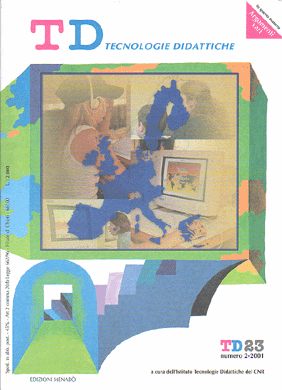Children and computers: how to change the way you play and learn
Main Article Content
Abstract
Article Details
Authors who publish with this journal agree to the following terms:
- Authors retain copyright and grant the journal right of first publication with the work simultaneously licensed under a Creative Commons CC BY 4.0 Attribution 4.0 International License.
- Authors are able to enter into separate, additional contractual arrangements for the non-exclusive distribution of the journal's published version of the work (e.g., post it to an institutional repository or publish it in a book), with an acknowledgement of its initial publication in this journal.
- Authors are permitted and encouraged to post their work online (e.g., in institutional repositories or on their website) prior to and during the submission process, as it can lead to productive exchanges, as well as earlier and greater citation of published work (See The Effect of Open Access)
References
Cangià, C., Un’architettura tutta da inventare, in Didattica e Nuove Tecnologie, n. 1/1996, pag. 6-9.
Chioccariello, A., Il computer nella scuola dell’infanzia, in TD - Tecnologie Didattiche, n. 2/2000, pag. 36-43.
Fasce, M., Come la sabbia, manipoliamo il computer. Il pasticciamento e l’interazione tra pari alla macchina nella scuola dell’infanzia, Atti del convegno TED, Genova 12-14 febbraio 2001, pag. 329.
Gardner, H., Frames of mind. The theory of multiple intelligences, Basic Book Inc., New York (tr. it. Formae mentis. Saggio sulla pluralità delle intelligenze, Feltrinelli, Milano, 1983.
Hawkins, D., The informed vision, Agathon Press Inc. 1974 (tr. it. Imparare a vedere. Saggi sull’apprendimento e sulla natura umana, Loescher, Torino, 1979).
Maragliano, R., Manuale di didattica multimediale, Laterza, Roma, 1998

